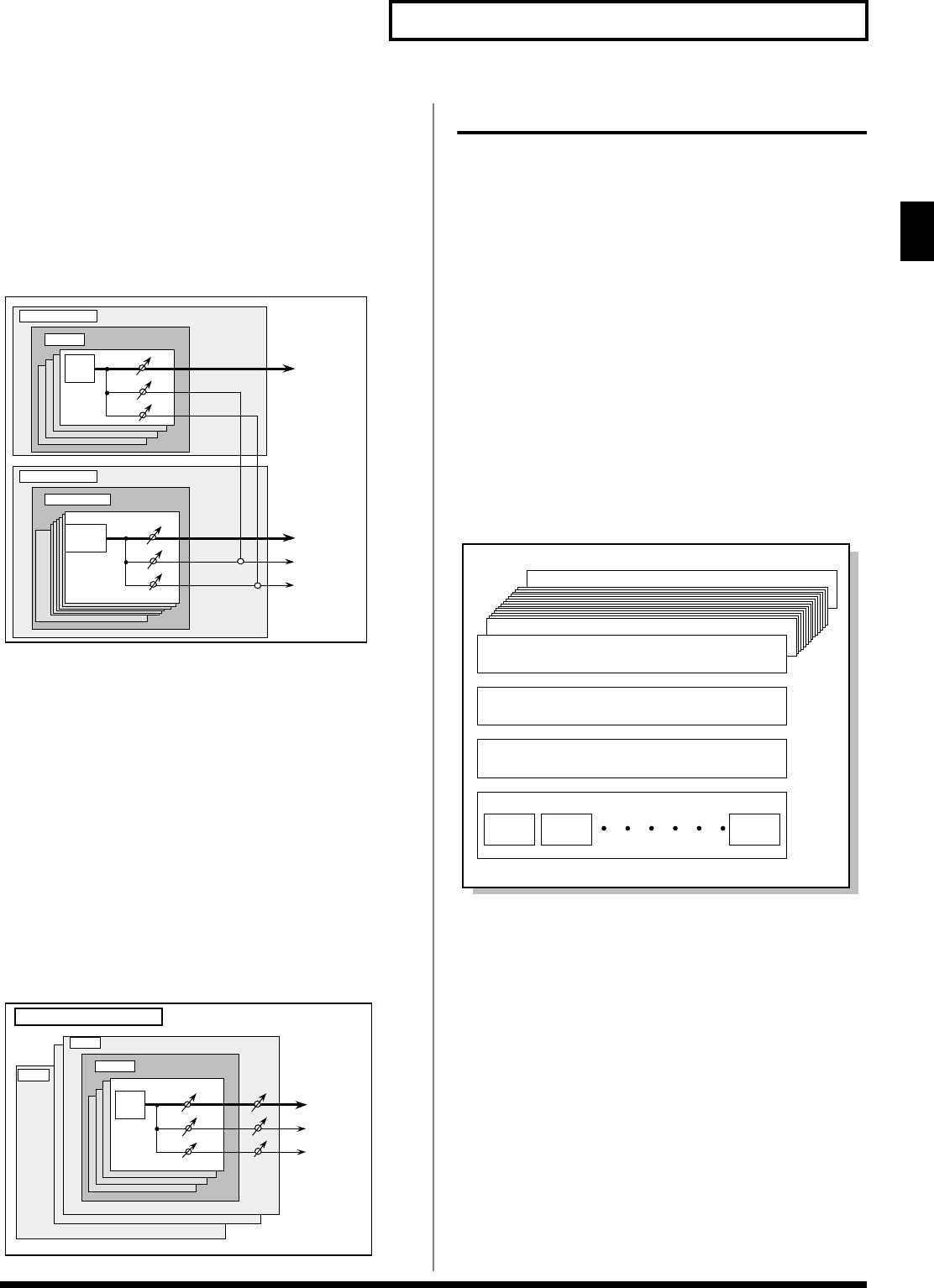
21
Overview of the Fantom-S
Overview of the Fantom-S
How Effects Units Work in Different
Modes
In Patch Mode
The multi-effects, chorus and reverb effects can be set up
individually for each patch/rhythm set. Adjusting the signal level to
be sent to each effects unit (Send Level) provides control over the
effect intensity that’s applied to each tone.
fig.01-07
* To each part you can assign either a Patch or a Rhythm Set.
In the Performance Mode
The multi-effects, chorus and reverb effects can be set individually
for each performance. The intensity of each effect will be set for each
part.
When you apply effects in Performance mode, the effect settings of
the patch or rhythm set assigned to each part will be ignored, and
the effect settings of the performance will be used. Thus, the effects
for the same patch or rhythm set may differ when played in Patch
mode and in Performance mode. However, depending on the
settings, you can have effect settings for a patch or rhythm set
assigned to a part applied to the entire performance. In addition,
when using the multi-effects settings of a performance, you can use
three different multi-effects simultaneously, depending on the effect
type (p. 175).
fig.01-08.e
About the Sequencer
A sequencer records keyboard performance and controller
movements as MIDI messages (sequencer data). As the data plays
back, the recorded MIDI messages are sent to a sound generator
which will produce the required sounds. The sequencer actually
plays instruments instead of the musician, and since it can record a
musical performance, it is a tape recorder as well.
But in reality a sequencer doesn’t record sound, but actually the
steps that cause the sound generator to produce sound, so it offers
several advantages. Sound quality is always excellent, the equivalent
of first-generation tape, no matter how many times the data plays
back; tempo changes have no effect on pitch; detailed editing is
possible, etc.
What Is a Song?
For the Fantom-S, musical performance data for one song or
composition is referred to as a song. A song combines sequencer
data recorded on Phrase tracks 1–16, a Tempo track, a Beat track and
a Pattern track, as discussed below.
fig.01-09.e
What Is a Track?
Each section of a song which stores musical performance data is
called a track.
Phrase Tracks 1–16
Phrase tracks record the musical performance. Each Phrase track
records musical performance data for 16 MIDI channels. Totally, up
to 16 tracks x 16 MIDI channels of data can be recorded. It’s helpful if
you’ve made decision prior to recording such as recording melody
on Phrase track 1, bass on Phrase track 2, drums on Phrase track 10,
and accompaniment on the remaining Phrase tracks.
TONE
Patch
Keyboard part
Multi-Effects
RHYTHM
TONE
Rhythm Set
Pad part
Chorus
Reverb
Multi-Effects
A0
C8
+
+
Chorus
Reverb
Multi-Effects
Performance/Multitimbre
Part16
TONE
Patch
Part 1
Phrase track 16
Phrase track 2
Phrase track 1
Tempo track
Beat track
Pattern track
Pattern
1
Pattern
2
Pattern
100
Song
Reference_e.book 21 ページ 2003年7月14日 月曜日 午後3時25分


















